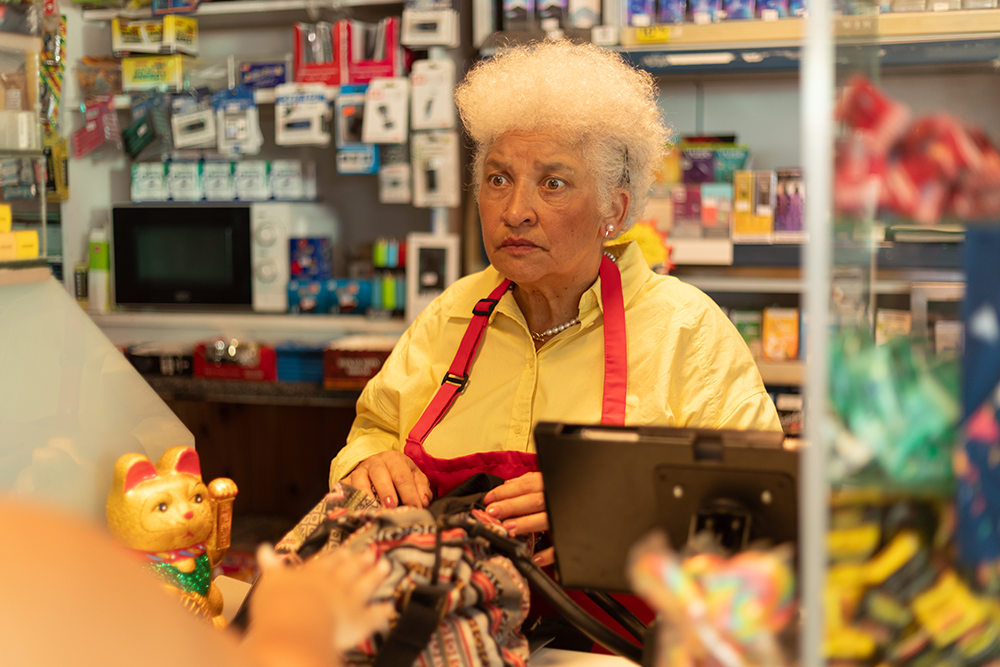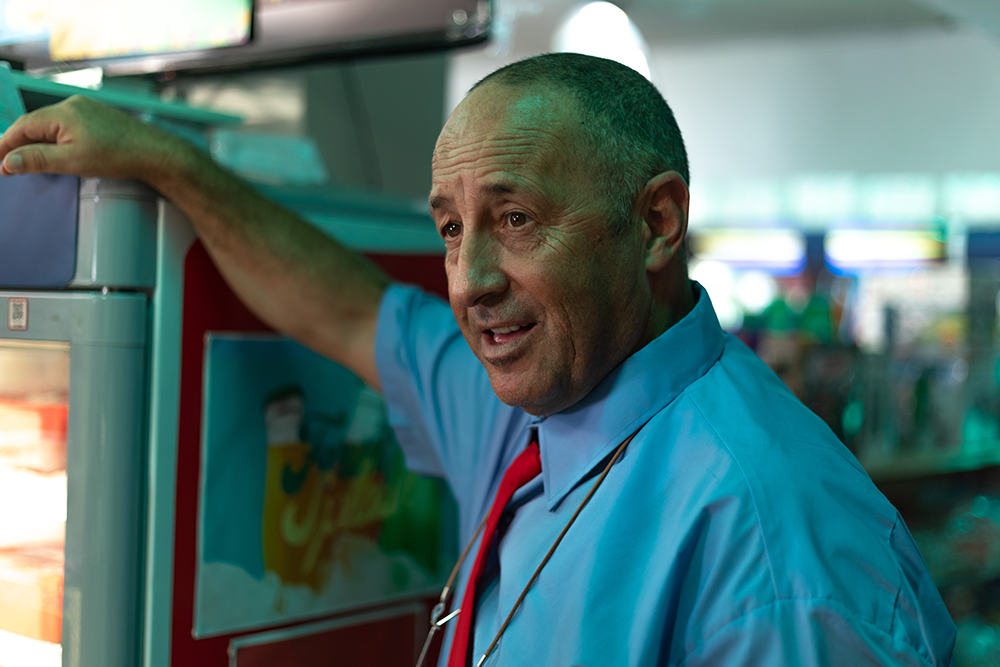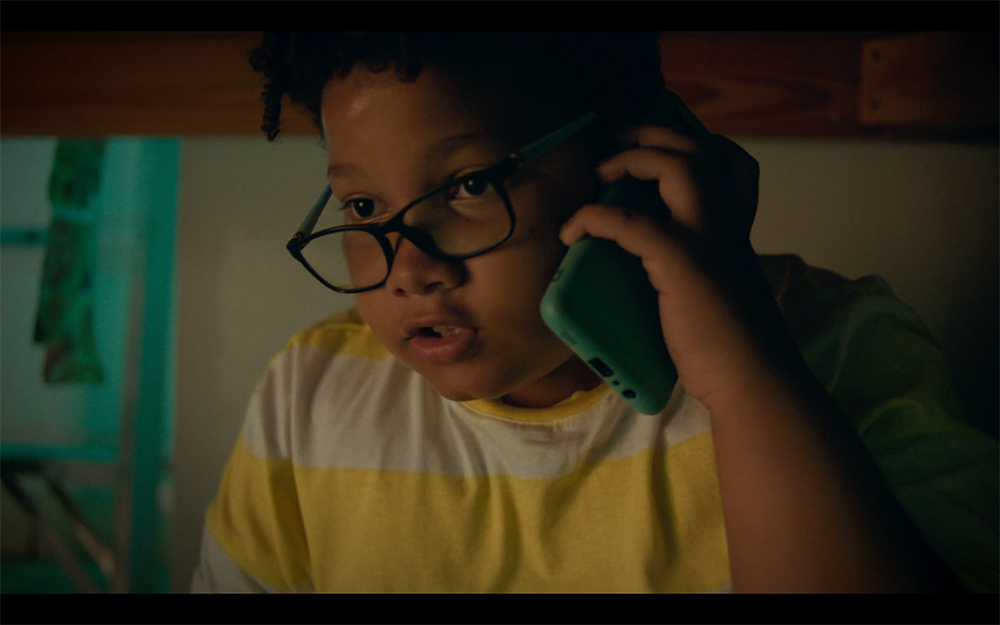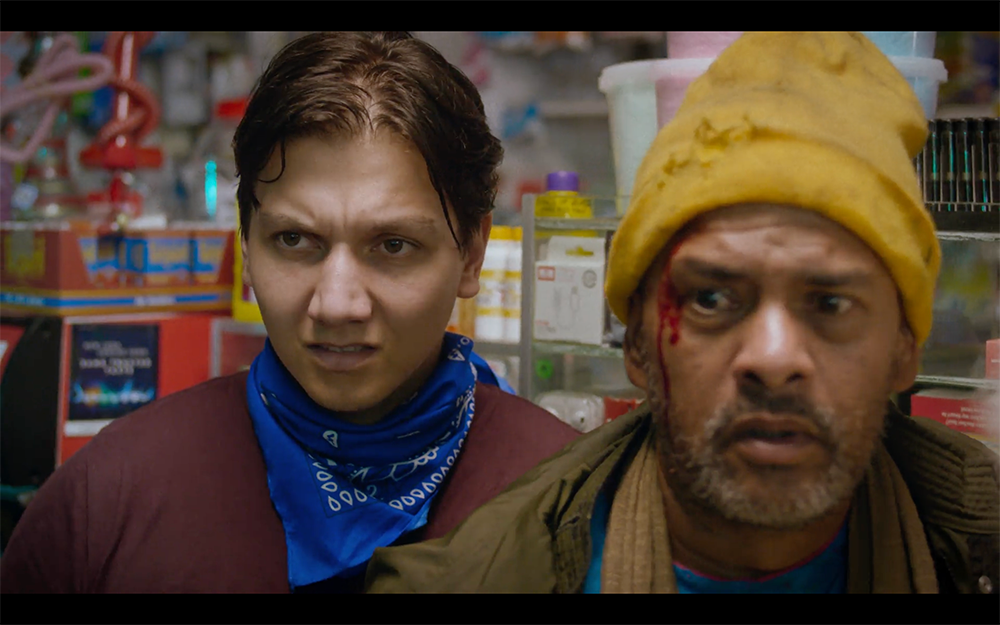



Short film by an established filmmaker: Die Superette
Die Superette, co-created by award-winning filmmaker Dominique Jossie and her life partner, Byron Simons, unfolds in the heart of a Cape Flats corner store, a place as familiar as it is unpredictable. With celebrated actress June van Merch leading the cast as Aunty Sonja, the film blends tension, wit and social commentary into a sharply focused narrative about community courage and quiet resistance.
Dominique shares more about the film:
What made you want to tell this particular story?
It’s important to note that I created this story with my partner, Byron Simons, who is not in the film industry, but has been by my side on my career journey for the past 13 years. This is our very first film together. We wanted to tell a story about ordinary people who are also heroes in our community. That’s how Aunty Sonja was born. It’s an opportunity to notice the often-overlooked people around us with a new perspective and appreciation.
Why was a superette chosen as the setting, rather than, for instance, a barber shop or salon?
The idea actually began with the superette. We loved the concept of a space that becomes a character in its own right. Unlike a salon or barber shop, which can feel more gendered or specific in terms of who visits, a superette draws everyone. It’s a true community melting pot.
Also, the contrast between mundane tasks like shopping for bread and milk, and the eruption of chaos through a robbery, makes for a cinematic setting. By placing Sonja at the centre of that storm, Die Superette becomes a reminder that extraordinary stories can unfold in the most ordinary places.
June van Merch plays Aunty Sonja with such a powerful blend of humour and seriousness. Was the character written with her in mind?
Yes, as the script developed, we definitely envisioned working with June. We knew she would embody this character with authenticity and depth. Of course, she also brought her signature magic to the role, elevating the character beyond the page. It was an incredible honour to collaborate with her on this project.
What are the main themes you aimed to explore in Die Superette?
The film looks at how very different people can come together in a moment of crisis, and how collective community courage manifests.
We’re also looking at hidden powers at play – there is always more going on beneath the surface in any high-stake situation, and we wanted to explore that through subtle clues and power dynamics.
Another theme centres around breaking the cycle of violence. This could have easily turned into another skop-skiet-en-donner film, but it was important to delay the violence. Our hero uses strategy, compassion and quick wit as her most powerful weapons.
Humour is such a big part of the film, despite the serious subject matter. Why did you decide to incorporate cheerfulness into the storytelling?
Humour was essential to Die Superette because it reflects how many South Africans cope with pressure, trauma and everyday struggles. We laugh, even when things are falling apart. In a story filled with tension, fear and desperation, humour becomes a lifeline. It humanises the characters, makes their reactions relatable, and gives the audience room to breathe between the tense and dangerous moments.
You’ve created some deeply impactful work over the years, often in longer formats. How does telling a story in a short film compare?
I love both watching and creating short films, but they come with their unique challenges. Shorter doesn’t necessarily mean easier. It requires you to be razor-sharp with your focus. You have to strip away anything that doesn’t serve the heart of the story. Every line, every shot, every sound matters. When executed well, short films can be incredibly powerful.
For me, the most important thing is to stay connected to the soul of the story – what you want your audience to feel or reflect on by the end. Also, single-location stories work beautifully in short format, and the superette provided us with exactly that.
